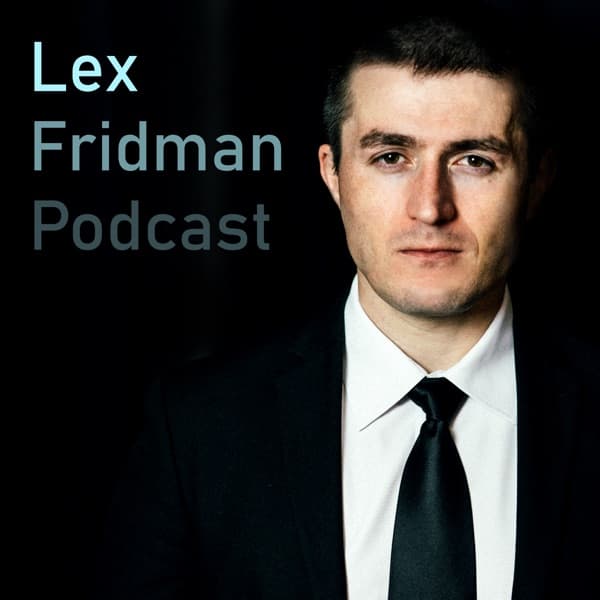All-In with Chamath, Jason, Sacks & Friedberg: The discussion focuses on economic strategies to manage U.S. debt, deficits, and economic growth, featuring insights from Scott Besant, Treasury Secretary.
The Twenty Minute VC (20VC): Venture Capital | Startup Funding | The Pitch: The discussion highlights the benefits of staying private longer for businesses, focusing on strategic investments and the evolving landscape of venture capital and growth equity.
All-In with Chamath, Jason, Sacks & Friedberg - Scott Bessent | All-In in DC!

The conversation with Scott Besant, Treasury Secretary, covers strategies to manage the U.S. economy, focusing on reducing the federal debt and deficit without causing a recession. Besant emphasizes the need for controlled spending cuts, deregulation, and private sector growth to balance the economy. He highlights the importance of reordering international trade, bringing manufacturing jobs back to the U.S., and ensuring energy affordability to support economic growth. The discussion also touches on the potential of a sovereign wealth fund to manage national assets and the need for regulatory reforms in banking to stimulate economic activity. Besant stresses the importance of aligning government actions with public sentiment and addressing affordability issues to restore the American dream.
Key Points:
- Reduce federal debt and deficit gradually to avoid recession.
- Deregulate financial systems to encourage private sector growth.
- Reorder international trade to bring manufacturing jobs back to the U.S.
- Create a sovereign wealth fund to manage national assets effectively.
- Address affordability issues to support the American dream.
Details:
1. 🕊️ Gathering Insights in Washington D.C.
- The visit includes strategic meetings with influential figures such as David Sachs and Elon Musk, highlighting the importance of gathering diverse perspectives.
- The focus is on understanding the intricacies of the national debt, aiming to gain comprehensive insights that can influence decision-making.
- The discussions are geared towards exploring potential solutions and strategies concerning national financial issues.
- The visit serves as a platform for exchanging ideas and fostering relationships with key stakeholders that could drive impactful change.
2. 🏛️ Anticipating an Exclusive Interview
- An exclusive interview is scheduled with Scott Besant, the Treasury Secretary of the United States, focusing on the deficit and current affairs in Washington, D.C.
- The anticipation is high for insights into the economic strategies and policies being implemented at the national level.
- The interview is expected to provide valuable information on fiscal policies directly from a key government official.
- Topics likely to be addressed include the national deficit, economic recovery plans, and future fiscal policies.
- The outcome of the interview could significantly impact public understanding and confidence in government fiscal strategies.
3. ✨ A Day at the White House
3.1. Exploring the White House
3.2. Notable Features and Interactions
4. 🏛️ White House Exploration and Encounters
4.1. Exploring the East Wing
4.2. Encounter with Secret Service
5. 💼 Interview with Treasury Secretary Scott Besant
5.1. Economic Overview and Ground Truth Data
5.2. Economic Policies and Challenges
5.3. Economic Forecasts and Future Outlook
6. 🔍 Scott Besant's Financial Background
- Scott Besant's financial acumen is deeply rooted in his father's experience as a real estate developer who navigated various economic cycles, instilling the importance of risk management.
- Besant's strategic focus is on mitigating risks, a crucial insight that underpins his approach to financial planning and decision-making.
- His career path includes specific achievements that reflect his commitment to risk management, though these details need expansion to fully capture his impact.
7. 📈 Macro Investing and Risk Management
- An internship with Jim Rogers, a prominent figure in the investment world and known for his partnership with George Soros, provided foundational knowledge in investment business. This experience significantly influenced the speaker's approach to macro investing and risk management.
- Key learnings from the internship included practical insights into global market trends and strategic investment decision-making.
- The internship emphasized the importance of understanding economic indicators and their impact on investment strategies, contributing to a more nuanced and informed approach to managing financial risks.
- Exposure to real-world investment scenarios during the internship fostered a strategic mindset, enabling the application of theoretical knowledge to practical challenges in the financial markets.
8. 📊 Macro Trading and Historical Insights
8.1. Career Journey and Strategic Transitions
8.2. Macro Trading Insights
9. 💡 Economic Policies and Challenges
- More than 40 years without a down year indicates an impressive track record, suggesting strong and consistent strategy execution.
- The approach of 'invest, then investigate' implies a proactive investment strategy that emphasizes flexibility and adaptability, allowing for adjustments based on real-time market feedback.
- The phrase 'it takes courage to be a pig' reflects the necessity for significant risk-taking to achieve substantial gains, highlighting the balance between risk and reward.
- Real-time feedback in markets provides immediate data, facilitating swift decision-making and strategy adjustments, crucial for staying competitive in dynamic market environments.
- The strategic emphasis on risk-taking, flexibility, and timely feedback suggests a comprehensive approach to navigating economic challenges.
10. 🏠 Housing and the American Dream
- Macro investing involves trading currencies, bonds, commodities, equities, and credit, and requires a deep understanding of central bank actions and government bond movements.
- Successful macro investors spend significant time with economists worldwide to understand global capital flow dynamics.
11. 💸 Debt, Spending, and Economic Strategy
- Bruce Kovner, a notable macro investor, emphasized the importance of envisioning a different future and believing it could happen as a key to success.
- Envisioning what could happen post significant global events (e.g., the fall of the Iron Curtain) is essential for strategic planning.
- Managing risk while imagining these significant changes is crucial for economic strategy and venture capital.
12. 🔧 Financial Deregulation
- During the financial deregulation period in the UK, the speaker worked as an analyst alongside Stan, a portfolio manager, and George, a risk manager.
- This era marked significant changes in the financial industry, similar to what is currently being seen in the US.
- The speaker experienced an 'aha' moment, realizing the profound impact of the new financial reality in England, which can be seen as a precursor to current financial shifts globally.
- Financial deregulation in the UK led to a more competitive and innovative financial market, influencing policy changes and market dynamics.
13. 🌍 International Trade Policies
- The UK's mortgage system relied entirely on floating rates, meaning changes in interest rates by the Bank of England directly impacted mortgage costs, creating financial vulnerability for homeowners.
- The UK's participation in the Exchange Rate Mechanism required maintaining its currency value within a specific band against the Deutsche Mark, influencing monetary policy decisions.
- To protect currency value within the Exchange Rate Mechanism, the UK had to raise interest rates, risking financial strain on homeowners due to the immediate effect on mortgage costs.
- These policies had broader implications on international trade, affecting currency stability and economic relations with European partners.
14. 🏢 Treasury's Role in National Security
- The Treasury has a significant strategic influence on national security through its decision-making process, which involves positioning and counterbalancing market moves to achieve a net change of 2.5%.
- The narrative involving Stan Druckenmiller and George Soros illustrates aggressive investment strategies, highlighting a mindset of maximizing strategic opportunities by considering substantial increases in investment, such as tripling a fund's deployment.
15. 🇺🇸 Political Dynamics and Leadership
- In September 1992, the British government faced immense market pressure that forced them to purchase an unlimited amount of pounds, highlighting the vulnerability of political decisions to financial market forces.
- The government's attempt to raise interest rates significantly to stabilize the currency was unsustainable, leading to a notable 20% gain in a single day, demonstrating the potential for dramatic market responses to political interventions.
- This scenario underscored the strategic importance for political leaders to anticipate 'the move after the move,' similar to strategies in backgammon, to effectively navigate subsequent opportunities and challenges post-initial interventions.
16. 💡 Energy Policy and Economic Transition
- The real economy is dislocated from the financial economy, exemplified by the Main Street-Wall Street dichotomy.
- An unsustainable situation remains unsustainable, highlighting the need for strategic intervention.
- The speaker met with President Trump 18 months ago, emphasizing the importance of addressing economic transitions.
- Strategic economic transitions involve aligning policy measures with real-world economic needs, focusing on sustainable growth.
- Concrete examples of successful economic transitions include countries that have integrated renewable energy into their economic frameworks, resulting in job creation and reduced carbon footprints.
- Metrics show that economies embracing green energy policies have seen a 20% increase in employment within the renewable sector.
- Meeting with policymakers like President Trump underscores the importance of government involvement in driving these transitions.
17. 🗣️ Leadership Reflections
17.1. Fiscal Policy Concerns
17.2. Immigration Transparency Issues
The Twenty Minute VC (20VC): Venture Capital | Startup Funding | The Pitch - 20VC: The 10 Question Framework a $217BN Manager Uses to Make Investment Decisions | Lessons from Turning Down Stripe, Coinbase and Losing Money on Northvault | The Bull Case for Bytedance | How Anduril Could Be a $200BN Company with Peter Singlehurst

The conversation explores the advantages of companies remaining private for extended periods, allowing them to focus on growth without the pressures of public markets. Peter Singlehurst from Bailey Gifford shares insights into their investment strategy, emphasizing the importance of understanding competitive advantages and the potential of businesses to scale. He discusses the challenges and opportunities in investing in growth-stage companies, highlighting the need for a disciplined approach to valuation and the importance of learning from past investment mistakes. The discussion also touches on the evolving nature of venture capital, the impact of AI on business models, and the significance of global investment opportunities, particularly in emerging markets like China and India. Singlehurst emphasizes the importance of a long-term perspective and the ability to adapt to changing market conditions, suggesting that the current environment offers unique opportunities for growth equity investors.
Key Points:
- Staying private longer allows companies to focus on growth without public market pressures.
- Understanding competitive advantages is crucial for identifying scalable businesses.
- A disciplined approach to valuation helps mitigate investment risks.
- Global investment opportunities, especially in emerging markets, are significant.
- Learning from past mistakes is essential for refining investment strategies.
Details:
1. 📈 Building Stronger Businesses: The Power of Staying Private
2. 🤖 Navigating AI Investments: Challenges and Competitive Advantages
- Large company-facilitated secondary rounds are increasingly common in AI investments, indicating a shift in investment strategies to accommodate liquidity preferences of early investors and employees.
- The investment landscape is fraught with challenges, but not all negative experiences are viewed as mistakes; instead, they are regarded as learning opportunities, highlighting a strategic learning approach.
- Despite the hype around AI, the company has not invested in major AI Large Language Model (LLM) companies, reflecting a cautious and perhaps strategic avoidance of high-risk, high-profile ventures.
3. 🎙️ Meet Peter Singlehurst on 20VC: A Journey into Private Investing
3.1. Defining Competitive Advantage
3.2. Introduction to 20VC and Bailey Gifford
3.3. Peter Singlehurst's Role at Bailey Gifford
4. 🚀 Empowering Entrepreneurs: Kajabi and Remote's Impact on Business Growth
- Kajabi's customers have collectively generated over $8 billion in total revenue.
- Kajabi users retain 100% of their earnings, with the average creator earning over $30,000 per year.
- Kajabi offers a comprehensive suite of tools including websites, email marketing, digital products, payment processing, and analytics for $69 per month.
- Kajabi is uniquely positioned to help entrepreneurs build and grow their online businesses without taking a revenue cut.
- 20 VC listeners can access a 30-day free trial of Kajabi.
5. ☁️ AWS: Supporting Startups with Cutting-Edge Technology
- AWS has supported over 280,000 startups globally since 2013, demonstrating their extensive reach and impact in the startup ecosystem.
- AWS has provided $7 billion in credits through the AWS Activate program, significantly reducing financial barriers for startups to leverage advanced technologies.
- Startups have access to cutting-edge technologies like generative AI, enabling them to rapidly develop and market innovative products.
- AWS offers specific tools like Amazon Q for AI-powered assistance and Amazon Bedrock for customizing AI foundation models, providing startups with tailored solutions for product development.
- AWS Tranium is available for startups looking to reduce the cost of AI workloads, offering a cost-effective solution for scaling AI operations.
6. 🗣️ From Public to Private: Peter Singlehurst's Investment Path
- Peter Singlehurst transitioned from a public market strategy to private company investing at Bailey Gifford in 2014.
- The public market strategy, Long-Term Global Growth Strategy, managed $50 billion, highlighting the scale of operations he was involved in.
- Senior investment partners James Anderson, Mark Urquhart, and Tom Slater were managing large amounts of capital, which led to the need for someone to focus on private companies.
- During this period, notable private companies included Airbnb and Spotify, which were in focus for their scale and investment potential.
- Peter Singlehurst volunteered to take on the responsibility of looking into these private companies, marking his entry into private investments.
7. 🔍 Lessons from Investment Mistakes: Growth Through Challenges
- Experience is the best teacher in investing, and avoiding mistakes can hinder learning opportunities.
- Adopting a less purist approach can benefit client engagement, as sticking to permanent capital vehicles limited accessibility for some clients.
- Recognizing trade-offs early on can provide strategic advantages, such as offering more traditional fund structures alongside permanent capital vehicles.
- Distinct business practices, like unique recruitment methods and being based in Edinburgh, offer competitive edges but should not be overvalued if not core to success.
- Painful investment experiences are not always mistakes; they often involve managing future uncertainties and probabilities.
- True investment mistakes occur when obvious risks were not appropriately assessed, leading to financial loss.
- Case Study: A firm lost 25% of its investment by ignoring early warning signs of market volatility, highlighting the need for robust risk assessment.
- Strategy: Implementing a balanced portfolio strategy reduced potential losses by 15% during market downturns, showcasing the importance of diversification.
- Example: Transitioning from permanent capital vehicles to mixed fund structures increased client retention by 20%, demonstrating the importance of flexibility.
8. 🧐 Risk and Reward: Key Investment Decisions and Market Dynamics
8.1. Intarsia: A Case of Regulatory Risk
8.2. Northvolt: Execution and Structural Challenges
8.3. Investment Strategy: Learning from Mistakes
8.4. Strategic Focus and Competitive Advantage
9. 💼 Business Model Scalability: Real-World Success Stories
- The median company in the investment portfolio generates approximately $200 million in revenue, grows at 70% year over year, and operates at negative 14% EBITDA margins.
- Wise scaled from $50-$60 million in revenue to a multi-billion dollar business, showing successful scalability and high return on equity.
- Wise expanded its business model from the consumer-to-consumer FX market to the business FX transfer market, significantly contributing to its growth.
- High return on equity is a key metric for investment success, even if the company is initially loss-making, as demonstrated by Wise.
- Focus is on business models capable of scaling and generating substantial profits relative to equity, crucial for long-term investment success.
- Additional examples could include companies like Shopify and Zoom, which have demonstrated remarkable scalability by expanding their product offerings and entering new markets.
- Shopify's growth was fueled by its expansion into international markets and partnerships with social media platforms, significantly increasing its merchant base.
- Zoom's rapid scalability was achieved through its focus on user-friendly technology that met the rising demand for virtual communication, especially during the COVID-19 pandemic.
10. 💰 The Impact of Overcapitalization in Venture Capital
- Companies often receive excessive capital, akin to foie gras production, leading to unsustainable growth.
- From 2019 to 2021, companies were overfunded, with investors paying ahead for anticipated growth, sometimes at the cost of realistic valuations.
- Excess funding can result in inefficiencies and failures, challenging the belief that more capital improves outcomes.
- In sectors like AI and fintech, overcapitalization is a challenge, but opportunities exist in less crowded areas.
- Bending Spoons exemplifies success by bootstrapping and avoiding overcapitalization, achieving scalability and profitability.
- Investment strategies should emphasize long-term value, competitive advantage, and sustainable business models.
- Bailey Gifford prioritizes sustainable growth and competitive advantages, investing in companies like Databricks and Tens Torrent.
11. 🤔 AI and Future Investments: Finding the Right Opportunities
11.1. Understanding Competitive Advantage in LLMs
11.2. Scalability and Revenue Growth in AI Applications
11.3. Investor Strategies and Valuation
11.4. Challenges in Revenue Scaling for Enterprise Companies
11.5. Nuances in AI and Fintech
11.6. Defensibility and Sustainability of Value
12. 🏢 Building Competitive Advantage: Culture and Sustainability
- A 10-question framework evaluates long-term growth by analyzing growth potential over 5 to 10 years, focusing on enduring success factors like organizational culture and financial analysis.
- Organizational culture is pivotal, emphasizing mission alignment rather than simplistic 'good' or 'bad' labels, with culture deeply influencing strategic advantages like M&A capabilities.
- Financial analysis looks for high return on equity by referencing industry precedents, while valuation methodologies aim to identify companies whose intrinsic value exceeds current market prices.
- Examples include companies where competitive advantages stem from strategic business elements rather than products, showcasing the founders' influence on firm character.
- While technological advances like AI can challenge competitive edges, they do not necessarily eradicate them, allowing for sustainable growth strategies.
13. 🔍 Evaluating Investment Upside Requirements and Exit Strategies
- Founder-led businesses dominate the largest investments, indicating their importance in scaling to large revenues.
- Such businesses are statistically more likely to achieve $200 million in revenue, highlighting the significance of founder leadership in growth.
- Despite the preference for founder-led models, Vinted exemplifies success as a non-founder-led business, showing alternative paths to growth.
- Growth is paramount, with outcome scenario planning used to forecast valuations, aiming for multiples such as 5X growth from $5 billion to $25 billion.
14. 🏆 Strategic Patience: Long-term Value in Investment
- Investment modeling aims for a consistent five times upside across all companies, ensuring comparability of investment cases.
- The probability for achieving a five times return is realistically set at 30-50%, which is favorable compared to the historical 5% chance of a random fivefold increase.
- Capital is strategically recycled from public to private investments when greater upside is expected, emphasizing flexibility.
- A disciplined approach of patience and high valuation standards is maintained, leading to minimal capital deployment in 2022 and 2023 due to inflated valuations.
15. 🌍 Global Investment Landscape: Risks and Opportunities
15.1. Valuation and Market Dynamics
15.2. Strategic Investment Focus and Investor Psychology
15.3. Cultural and Market Insights
15.4. Global Investment Strategies and Opportunities
16. 🔄 Liquidity and Public Markets: Navigating Current Trends
16.1. Risk and Pricing
16.2. Capital Planning and Profitability
16.3. Growth vs. Profitability
16.4. Investment in ByteDance
16.5. Liquidity and Public Offering
17. 💼 Growth and Secondary Markets: New Avenues for Liquidity
- Companies are increasingly buying back their own shares due to high profitability, questioning the need to go public. For example, Epic Games remains private to focus better and avoid public reporting challenges.
- Staying private allows companies to avoid disclosing extensive business information, which could benefit competitors.
- Secondary private rounds provide liquidity options for employees, reducing the necessity to go public, as seen with companies like Stripe and Databricks facilitating such rounds.
- Public listing is beneficial for acquisitive companies, those in regulated environments, or those needing public currency, offering examples like banks and pharmaceutical companies.
- Complex share class structures hinder the establishment of private company exchanges.
- The trend of facilitating secondary rounds may increase, especially in the absence of IPOs, providing a new avenue for liquidity.
18. 📊 Analyzing Private vs Public Markets: Different Investment Approaches
- Private companies are beginning to pay dividends to offer liquidity for investors, exemplified by Databricks' $60 billion valuation round where investors opted to maintain rather than increase their stakes.
- Investment dynamics in growth stage private companies have shifted, with traditional public investors like BlackRock replaced by hedge funds and early-stage investors forming growth-stage funds.
- After 2021, a shift occurred where some investors exited the market, while others remained, contributing to market professionalization. Anduril serves as an example, likened to Tesla and SpaceX, with its software-enabled hardware solutions in large, stagnant markets.
- Investors in Anduril are experienced in transitioning companies from private to public markets, drawing parallels to Tesla's strategy in 2013 and SpaceX's in 2018, highlighting strategic positioning.
- There is ongoing debate about the necessity of different skills for managing private versus public investments. Sequoia's evergreen fund structure is an attempt to utilize asymmetric information from private investments to enhance public market management.
19. 🌐 Global Strategy: Investment Challenges and Opportunities
19.1. Investment Analysis Similarities
19.2. Ownership Differences
19.3. Political Risks
19.4. Investment Focus and Challenges
19.5. Global Investment Concerns
19.6. China's Investment Potential
20. 🔄 Decision-Making in Investments: Learning from Missed Opportunities
20.1. Reconsidering Market Consensus
20.2. Investment Process at Bailey Gifford
20.3. Reinvestment Strategy
20.4. Reflection on Missed Opportunities
21. 🧐 Reevaluating Public Markets: The State of Global Listings
- Adyen is potentially underpriced at $40, especially when compared to Stripe, which is growing faster and has a market cap double that of Adyen.
- Bailey Gifford continues to hold shares of companies like Affirm and Wise even after they go public, emphasizing a long-term investment strategy.
- The UK public market, particularly the London Stock Exchange, is perceived as being in a dire state due to a lack of high-growth companies and less investor appetite compared to markets like NASDAQ.
- There is a supply and demand problem in the UK market, with few exciting growth companies and investors less accustomed to high-risk investments.
- The suggestion of a European public market is raised to consolidate growth-stage companies across Europe, as individual markets like Frankfurt and Paris also face similar struggles.
- Strategies to improve these markets include fostering a culture more accepting of risk, increasing the visibility of potential high-growth companies, and potentially creating a unified European public market to attract investors.
22. 💡 Growth Equity Insights: Ensuring Future Business Success
22.1. Private Market Strategies
22.2. Investment Opportunity Cost
22.3. Market Trends and Consolidation
22.4. Investment Decisions and Missed Opportunities
22.5. Obvious Investment Successes
22.6. Investment Philosophy
23. 👨👩👧👦 Personal Growth: Parenthood and Investing Perspectives
23.1. Investment Strategy and Bending Spoons
23.2. Risk Tolerance and Investment Preferences
23.3. Leadership and Decision-Making
23.4. Tech Investment Decisions and Market Views
23.5. Changing Perspectives on Value Addition
23.6. Parenthood and Investment Approach
24. 🏛️ Legacy and Culture: Bailey Gifford's Long-term Vision
- Bailey Gifford is a 115-year-old intergenerational, unlimited liability partnership, emphasizing the stewardship of its organization and clients.
- The firm operates by remunerating partners through bonuses as a form of synthetic carry, focusing on maximizing client value and ensuring a smooth transition for future partners.
- There's a significant market opportunity for growth investors as many venture-backed companies reach the $20 million mark, de-risked on the product side, allowing investors to back successful experiments.
- The current market has a wealth of human capital experienced in scaling businesses, which is beneficial for growth investing.
- The availability of capital is balanced, providing enough to invest without compromising long-term business quality, creating an ideal environment for growth equity investments.
- There is an opportunity for firms like Bending Spoons to take large, low-growth, non-profitable companies with high revenues and make them profitable, adding significant value.
- Bailey Gifford successfully backed firms like Tesla and Amazon early in their growth stages, showcasing their strategic vision and capability to identify transformative businesses.
- The firm's methodology focuses on identifying long-term trends and disruptive companies, which has historically resulted in high returns for their clients.
25. 🎧 Closing Thoughts: Sponsors and Future Episodes
25.1. Kajabi Sponsorship Insights
25.2. Remote Sponsorship Insights
25.3. AWS Sponsorship Insights
Included Channels
 Lex Fridman Podcast
Lex Fridman Podcast All-In with Chamath, Jason, Sacks & Friedberg
All-In with Chamath, Jason, Sacks & Friedberg Modern Wisdom
Modern Wisdom Greymatter
Greymatter In Depth
In Depth a16z Podcast
a16z Podcast Lenny's Podcast: Product | Growth | Career
Lenny's Podcast: Product | Growth | Career Lightcone Podcast
Lightcone Podcast No Priors AI
No Priors AI The Twenty Minute VC (20VC): Venture Capital | Startup Funding | The Pitch
The Twenty Minute VC (20VC): Venture Capital | Startup Funding | The Pitch How I Built This with Guy Raz
How I Built This with Guy Raz BG2Pod with Brad Gerstner and Bill Gurley
BG2Pod with Brad Gerstner and Bill Gurley Latent Space: The AI Engineer Podcast
Latent Space: The AI Engineer Podcast







